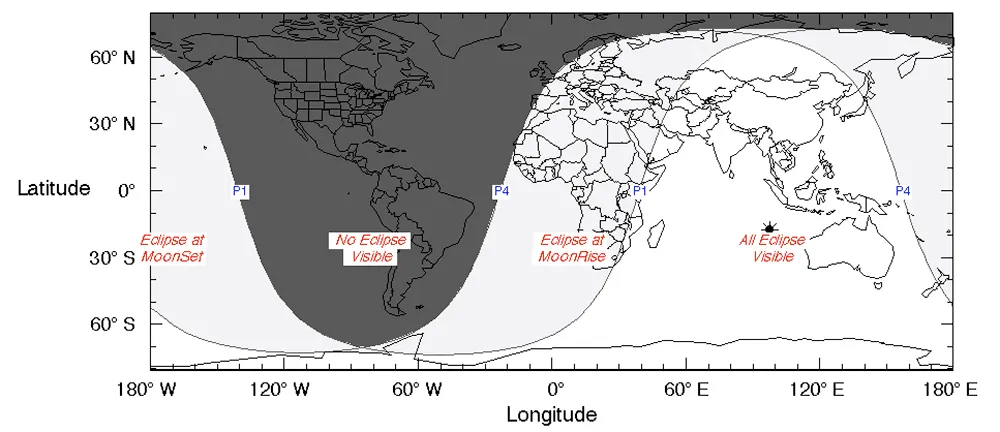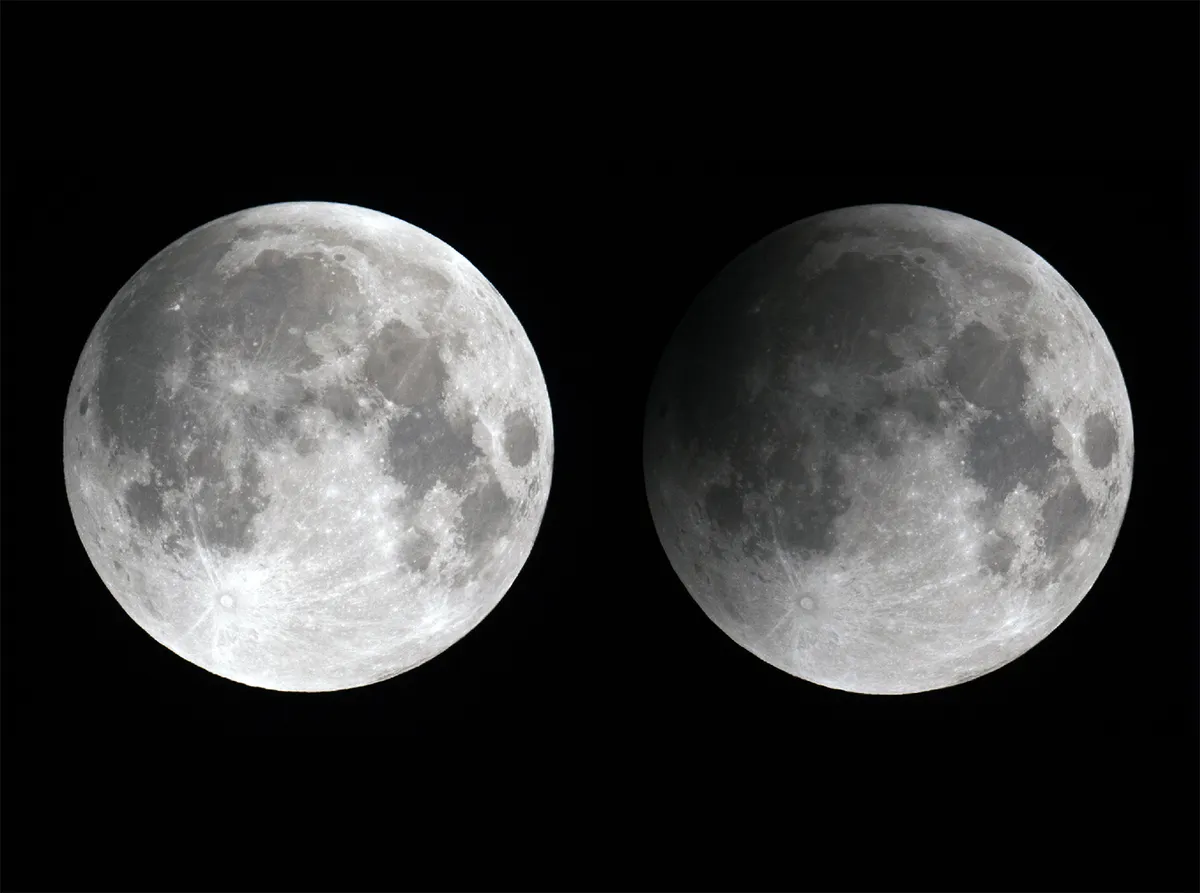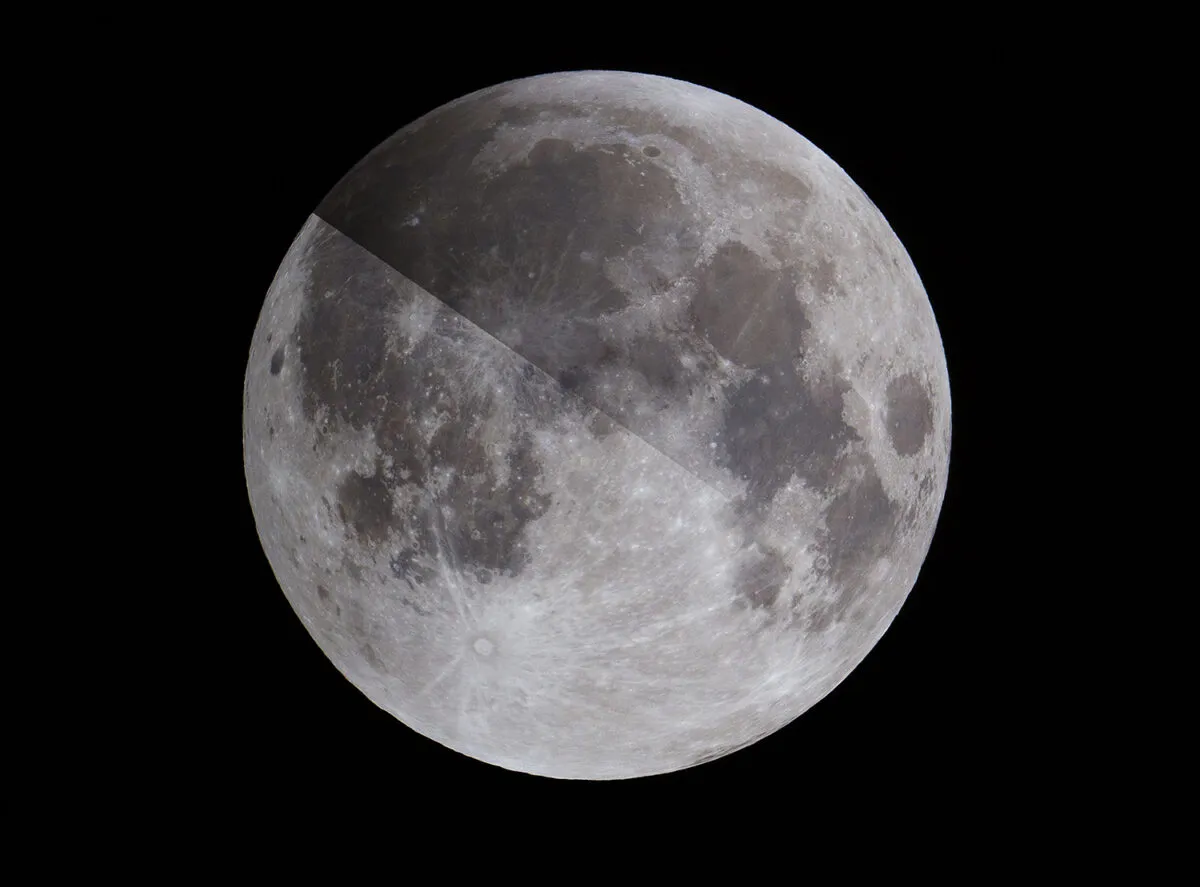A penumbral lunar eclipse is visible on the night of 5-6 May 2023 for observers positioned in Asia, Australia, New Zealand, the Middle East and Antarctica.
It will also be visible in parts of mainland Europe during moonrise.
What observers will see is a subtle darkening of the Moon during the event but, it has to be said, not the spectacular reddening that occurs during a total lunar eclipse.
Find out whether you'll be able to see the penumbral lunar eclipse in the map below, courtesy of NASA and eclipse-chaser and author Fred Espenak, who runs the website mreclipse.com.

The eclipse begins at 15:14 UTC on 5 May, 2023, but the Moon will not be visible at this time for those in the UK or North and South America.
Greatest penumbral eclipse will occur at 17:22 UTC on 5 May and the event will end at 19:31 UTC, so be sure to convert the timings for your own timezone.
In all, the event will last for 4 hours 17 minutes.
What is a penumbral lunar eclipse?

When a shadow is cast by any object from an extended light source, we observe two things: a dark inner umbral shadow and a lighter outer penumbral shadow.
Consider that extended light source is the Sun, and the shadow in question is cast by Earth on the Moon.
This produces a dark umbra and a weaker, more subtle penumbra.
“The shadow of a planet produces an umbral and penumbral shadow depending on the location of the planet and the Sun. The darkest eclipses occur when the Moon moves through the Earth’s umbral shadow," saysDon Pollacco, Professor of Physics at the University of Warwick in the UK.
“A penumbral eclipse occurs as the Moon moves through the penumbral shadow of the Earth. In these cases, the darkening of the Moon is usually quite difficult to spot. Some of the Moon is still being illuminated by the Sun."
Indeed, whereas umbral lunar eclipses are quite impressive, penumbral lunar eclipses are much more subtle, and you may need to concentrate quite hard to appreciate the change in appearance.
It also helps, of course, to get your timings right, as then you'll know exactly when to look.
A video showing the mechanics of a penumbral lunar eclipse is visible at www.timeanddate.com.
Photographing the penumbral lunar eclipse

The penumbral shadow creates a weak gradient across the Moon’s disc, and you may get the best results by photographing the penumbral lunar eclipse with a DSLR camera.
The Moon is a bright object, which makes it suited for DSLR imaging. A low ISO is recommended. Find out more in our guide on how to photograph the Moon.
Try taking one image before or after the eclipse and one at the point of greatest immersion, then comparing the two.
A lens on a tripod will work, but of course equatorial tracking will keep the Moon in frame and make the process much easier!
If you do manage to photograph the penumbral lunar eclipse, don't forget to send us your images.
